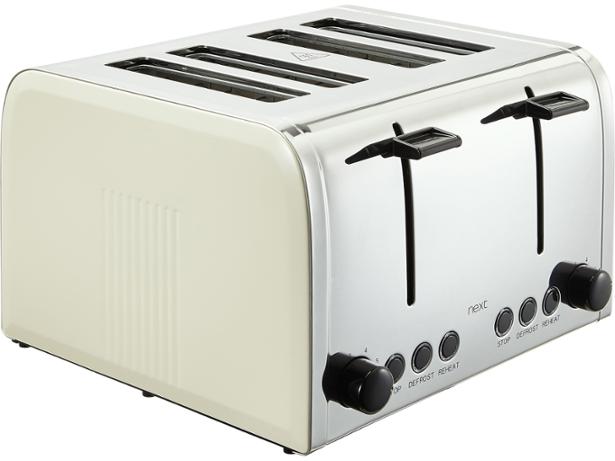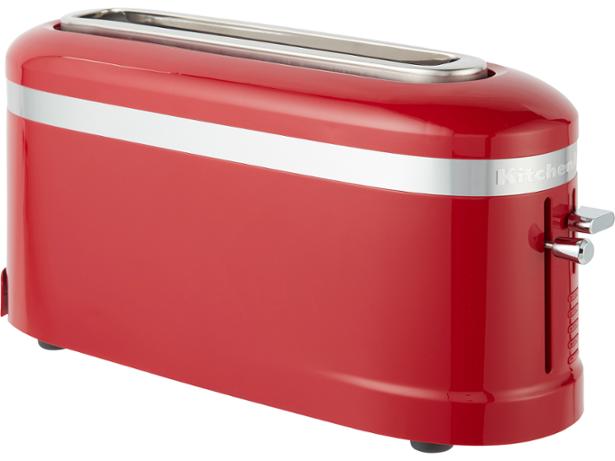How we test toasters

From even browning to ease of use, we measure every aspect of a toaster's design and performance to help you choose the perfect model. But how do we test them?
Most free-to-access review sites typically get all the toasters they review free of charge from manufacturers, but at Which? we buy all the appliances ourselves. This means that our reviews are unbiased and you can have complete trust in our verdict.
The Which? overall percentage score is calculated purely on the measurements and ratings supplied by our testing laboratory, so there's no room for bias when giving an overall rating.
Head to our round-up of the best toasters we've tested.
What are Which? Best Buy, Great Value and Don't Buy toasters?

Our toaster recommendations will help you narrow down your shortlist, but you should still read our reviews to check for other factors that might influence your decision.
Best Buy toasters
Best Buy toasters typically do well in most – if not all – of our tests, scoring 71% or higher to earn the recommendation.
Most will evenly brown slices of fresh white bread in under three minutes, accommodate a variety of bread types and sizes, and be easy to use.
Great Value toasters
If you're after a good toaster but don't want to spend over the odds, then our Great Value recommendations are for you.
Great Value toasters are at least 20% cheaper than the average price of the toasters we've tested and they do pretty well in our tests – scoring 60% or more.
A few of our Great Value toasters score highly enough to be made Best Buys, too.
Don't Buy toasters
Toasters that score 45% or less are Don't Buy toasters and should be avoided at all costs.
How the Which? score is calculated
The Which? overall score is a percentage – it only takes into account the results of our tests and ignores price completely.
This means that all toasters are tested on an equal scale, so you can compare any model at any price and know how it measures up against its rivals in key areas. We test all toasters in the same way, regardless of manufacturers’ claims.
Weightings and star ratings
A Which? test score is made up of dozens of individual tests that check key factors such as speed and evenness of toasting, versatility, ease of use and cleaning.
To keep things simple, the most important scores are shown as star ratings out of five on each toaster's test-results page. This easy-to-compare list of strengths and weaknesses lets you quickly work out whether a model is right for you.
The most important test results have a greater impact on a toaster's overall score:
- 40% evenness of browning
- 20% ease of use
- 20% browning coverage
- 10% fitting different types of bread
- 7% speed of toasting
- 3% consistency
Our toaster testing criteria

The following are our key testing criteria and how we evaluate each one:
Evenness of browning
Key question: How evenly does the toaster brown the toast?
A slice of toast with a patchwork of raw areas and burnt edges does not make for a happy breakfast. Our toasting tests use a specialised device to assess how evenly browned toast is, so you end up with a lovely golden slice.
We make three rounds of toast with each toaster using fresh bread. Our digital equipment checks every slice for burnt and unbrowned areas, and whether the toast is 'stripy', using the uniformly golden-brown 'holy grail of toast' (illustrated above) as our benchmark for the perfect slice.
We use medium white supermarket bread for our toasting tests. It’s a consistent shape and just the right size to fit in the average toaster, as well as being thick enough to stand in the bread chamber without sagging. We store the bread in controlled conditions so that variations in freshness don't affect our test results.
Evenness of browning accounts for 40% of the total score.
Ease of use
Key question: Is the toaster easy to use?
Toasters should be simple to use – your morning breakfast routine shouldn't involve having your nose in an instruction booklet or result in accidentally chargrilled toast.
We check that all buttons and dials are easy to understand and use, and that the instruction manual is clear and helpful, in case you need to refer to it.
We also check that the crumb tray is easy to open and empty without spilling crumbs everywhere.
If buying a toaster that's easy to use is high on your priority list – you may, for example, have reduced dexterity and find awkward dials and controls a bother – then look out for a toaster with a four or five-star rating for ease of use.
Ease of use accounts for 20% of a toaster's score.
Browning coverage
Key question: Does the toaster toast the bread to our optimum golden-brown colour?
A great slice of toast should be a golden-brown shade, with no noticeably paler or darker areas.
For an accurate result, we use the same digital equipment to run an image analysis on both sides of every piece of toast, looking at what percentage turns the perfect golden-brown colour.
The best toasters produce toast that's at least three-quarters this colour. With the worst toasters, more than half of the toast is either too light or too dark.
Browning coverage accounts for 20% of a toaster's score.
Fitting different types of bread
Key question: Can you toast different-sized slices of bread in it?
We use cardboard templates that mimic the size, shape and thickness of common bread slices – such as normal-sized and tall sliced bread, homemade bread and crumpets, to find out how versatile each toaster is.
The best toasters will accommodate a variety of bread types, whether they're thick, thin, large, small or awkwardly shaped.
We test how well a slice fits into the toasting slot, and how easy it is to remove once toasted. Some smaller items, such as hot cross buns, can be tricky to reach, leaving you with burnt fingers or crumbled toast.
Fitting different types of bread accounts for 10% of a toaster's score.
Speed of toasting
Key question: How quick is the toaster?
We time how long each toaster takes to toast either two or four slices of bread, depending on how many it can hold. The quickest can knock out toast in less than two minutes, while some take more than twice as long.
Speed accounts for 7% of a toaster's score.
Consistency
Key question: Does each slice have the same level of brownness?
Not only do we assess the browning evenness and coverage for each individual slice of toast, but we also compare the slices to each other, checking whether they display the same degree of browning.
The best toasters consistently turn out slices of the same golden-brown shade; the worst are erratic, popping out slices that are darker or paler than the rest.
Consistency account for 3% of a toaster's score.
Pick the perfect toaster with Which? reviews
In our independent, scientific toaster tests, we've seen all types of toast – from pale and underdone, through patchy and striped, to burnt to a crisp.
Only a small proportion of toasters achieve the 'holy grail' of perfect golden toast and are good enough to become Which? Best Buy toasters. And money is not a reliable indicator of quality – we've tested some pricey models that can barely warm bread, despite costing hundreds of pounds.
We can help you avoid dodgy toasters that are slow and leave you with burnt or patchy toast.
Discover the toasters that stand out from the crowd by checking out our toaster reviews.



